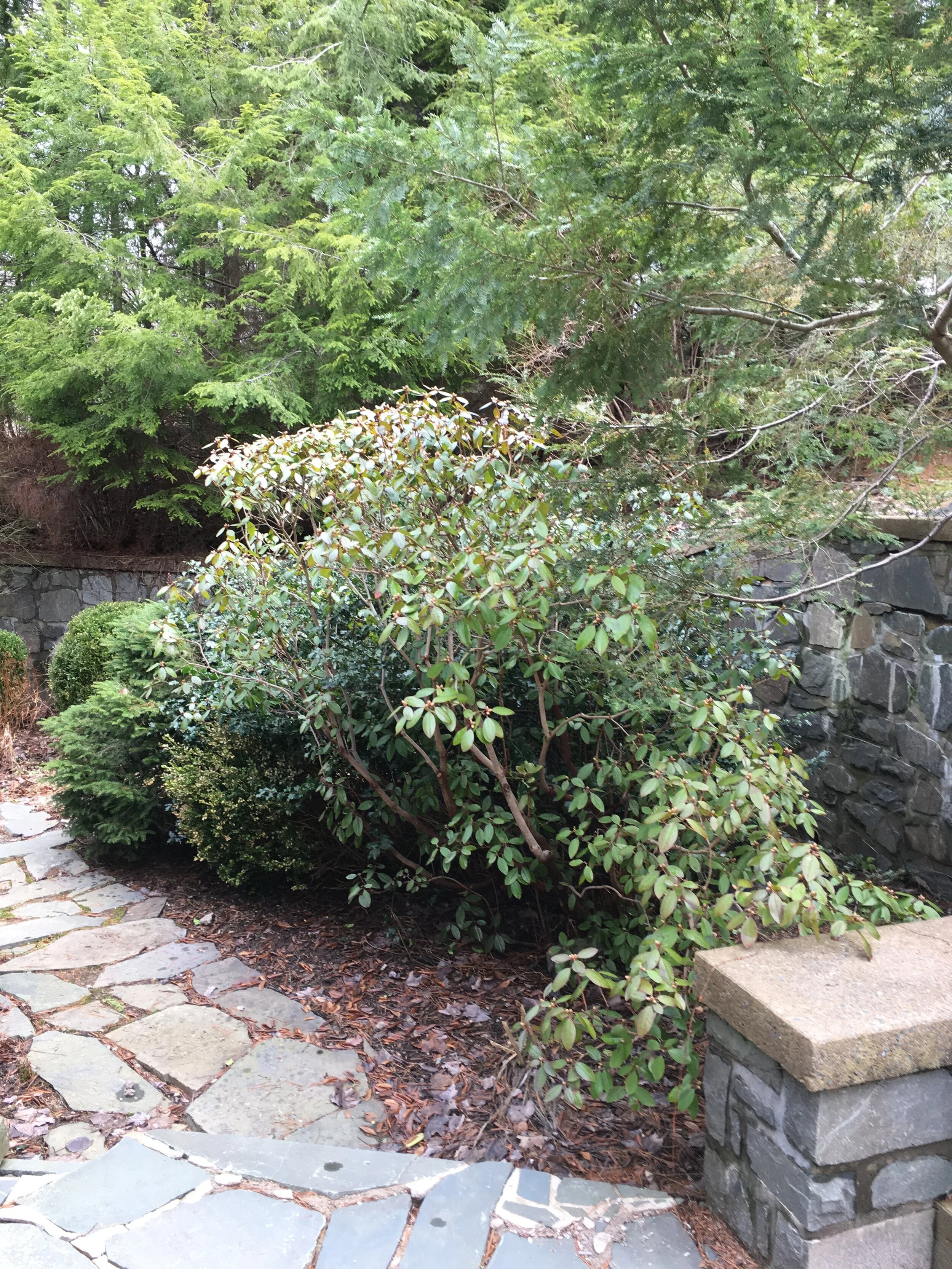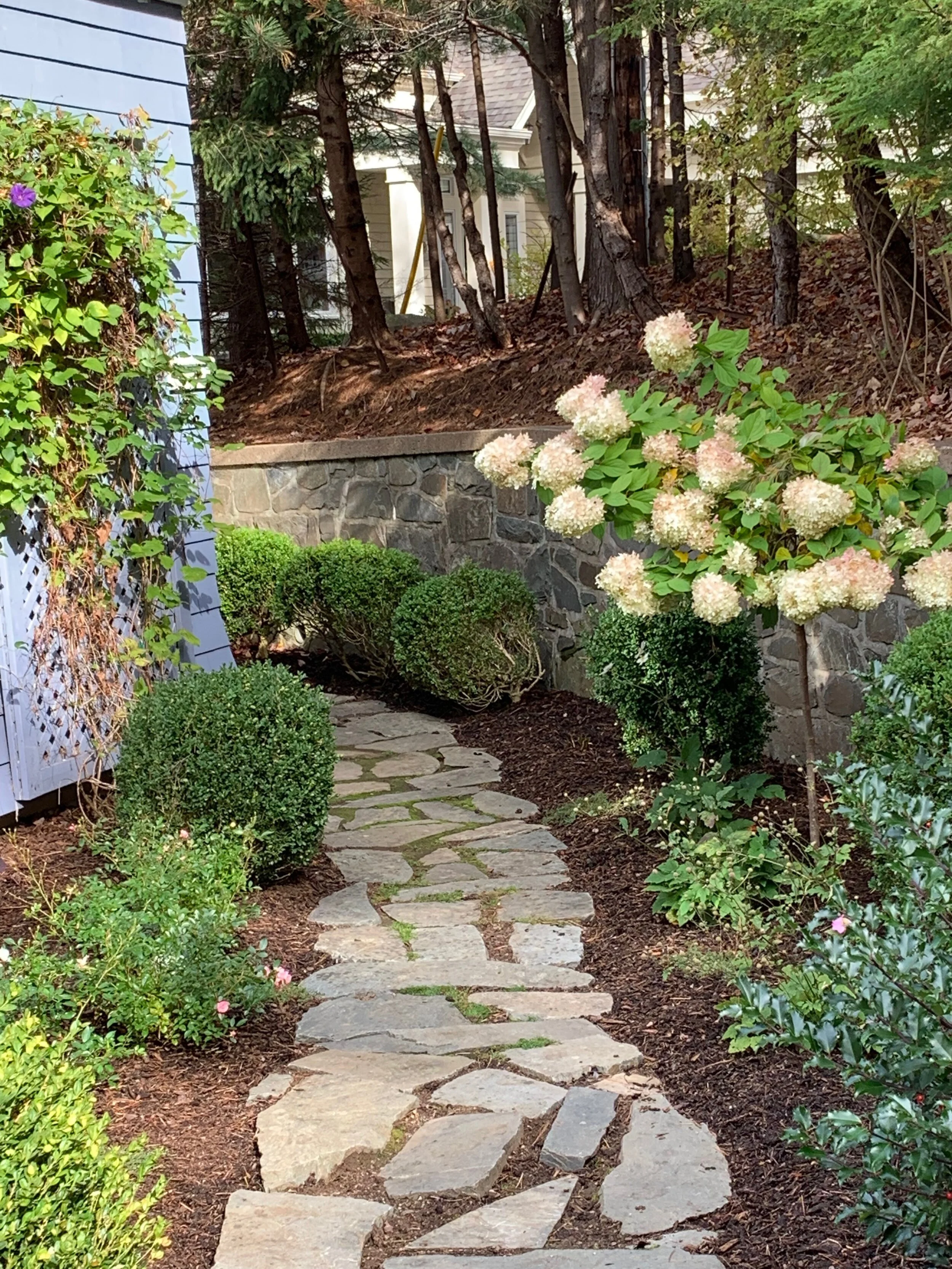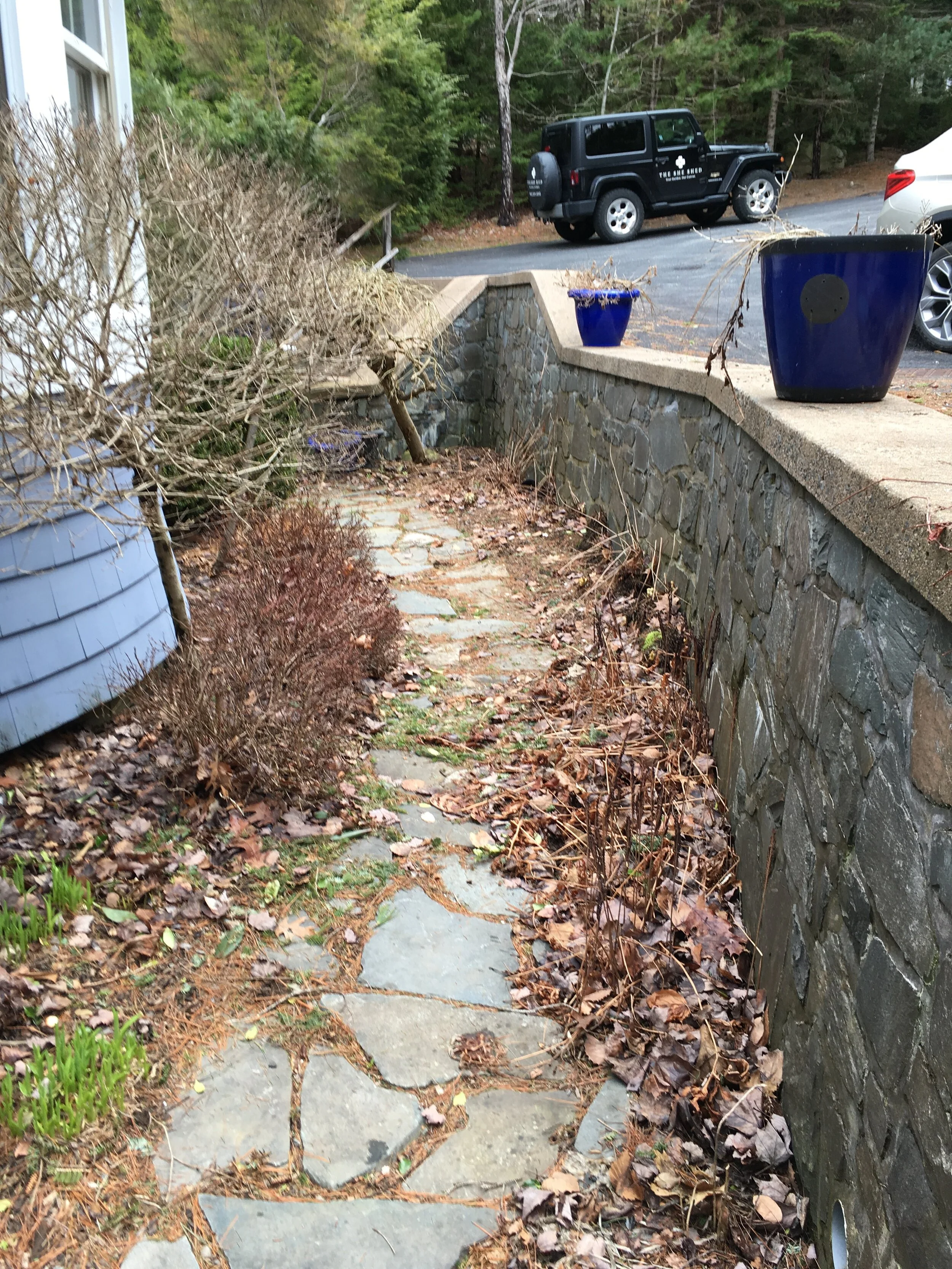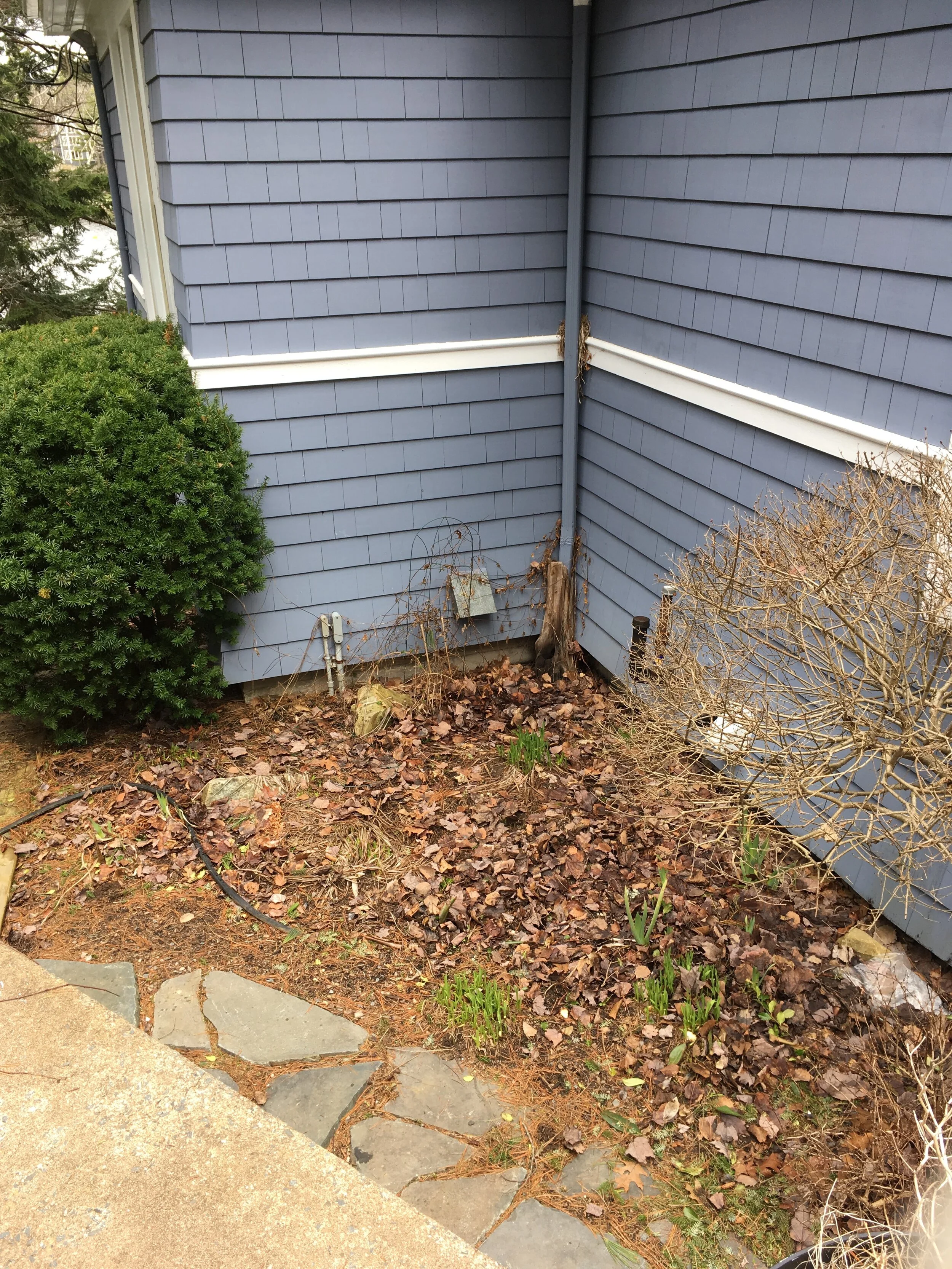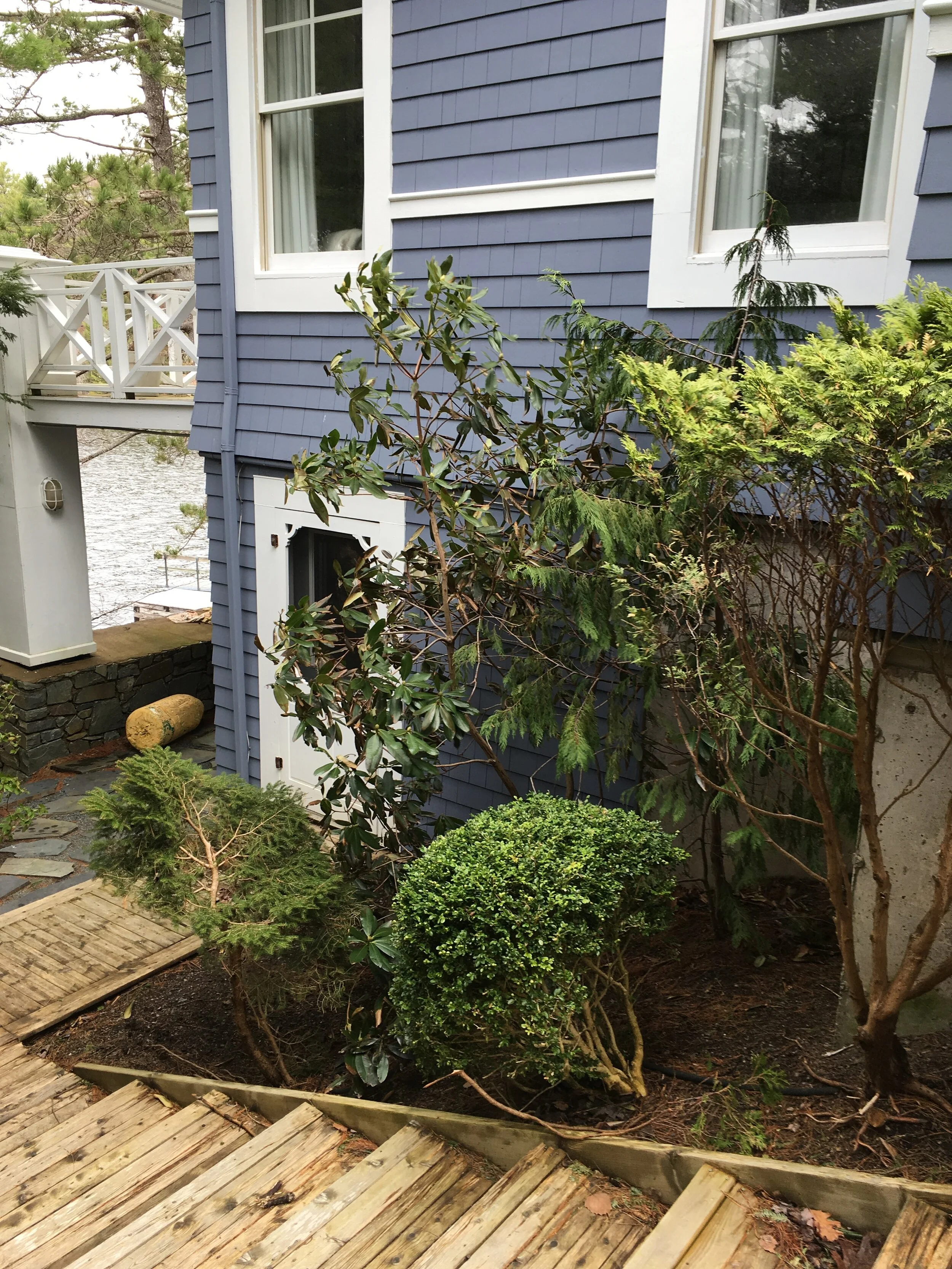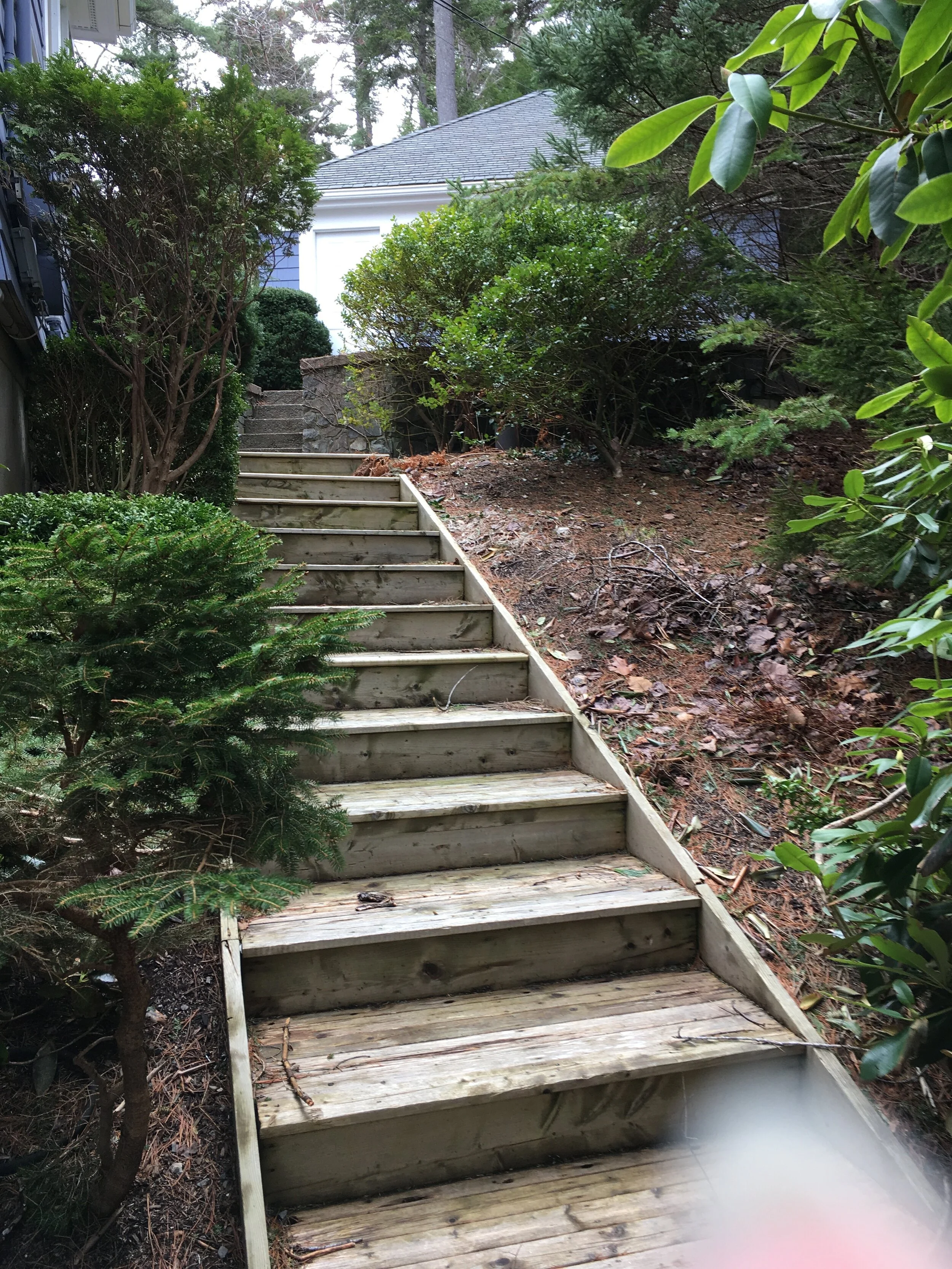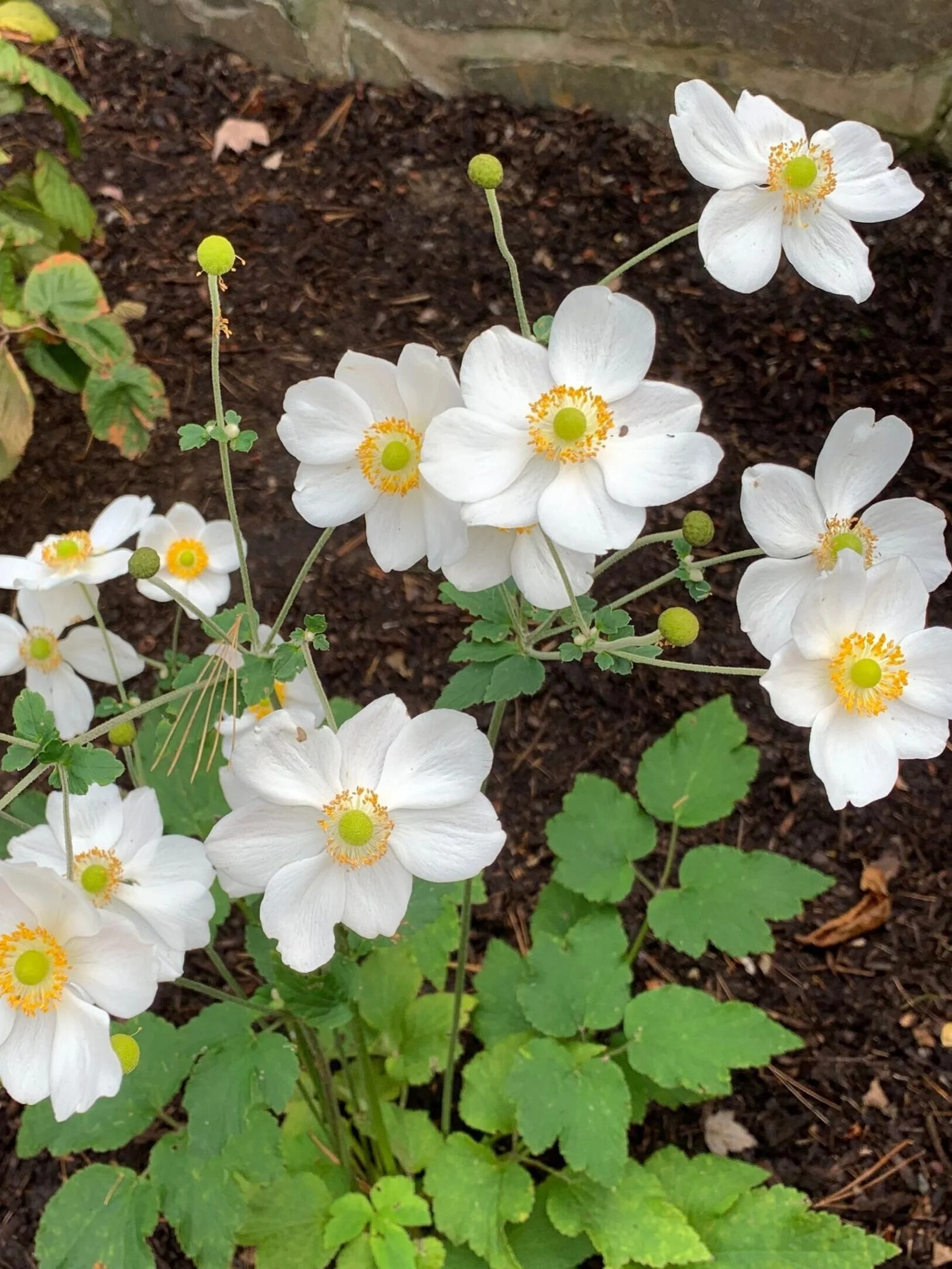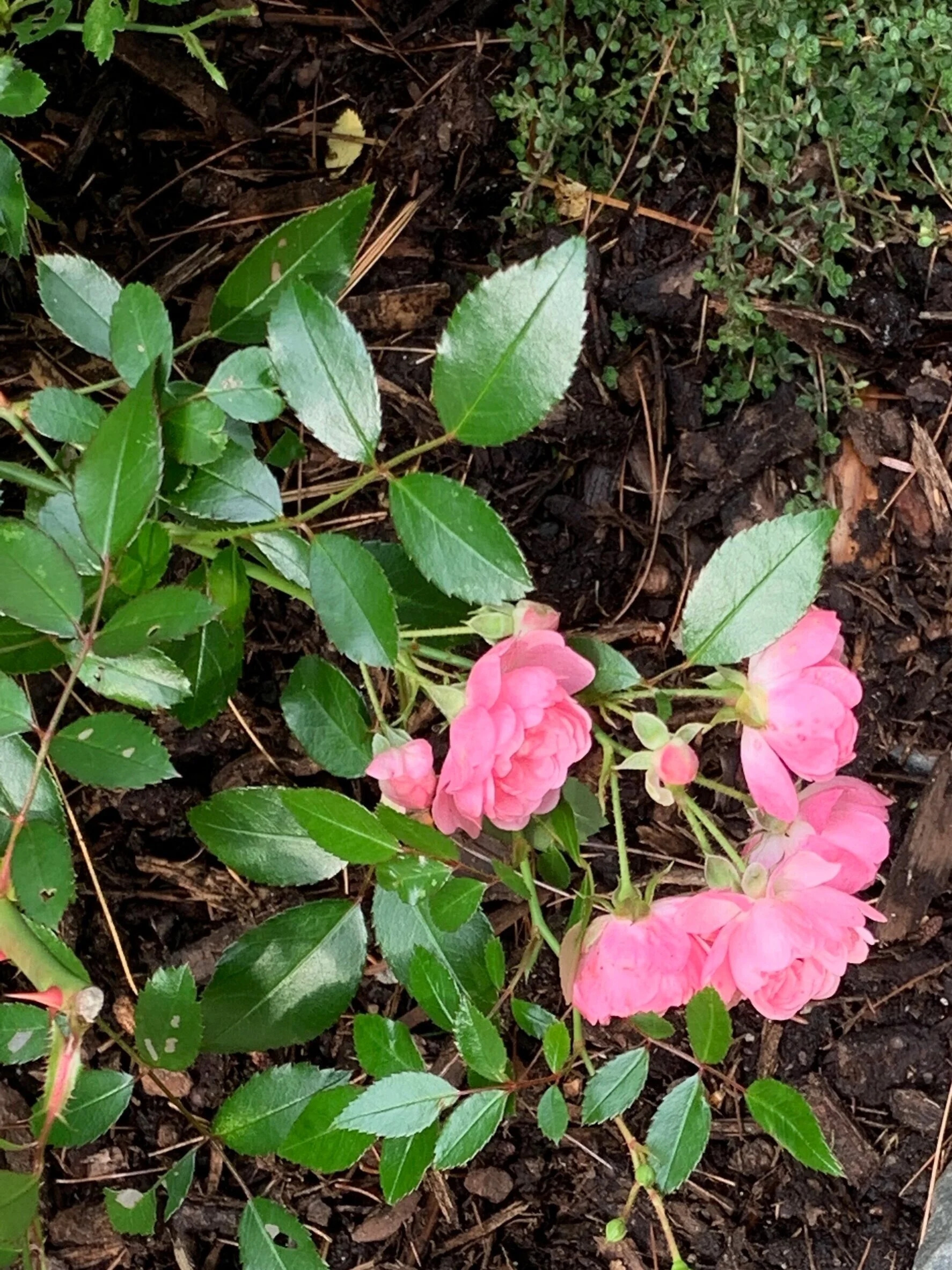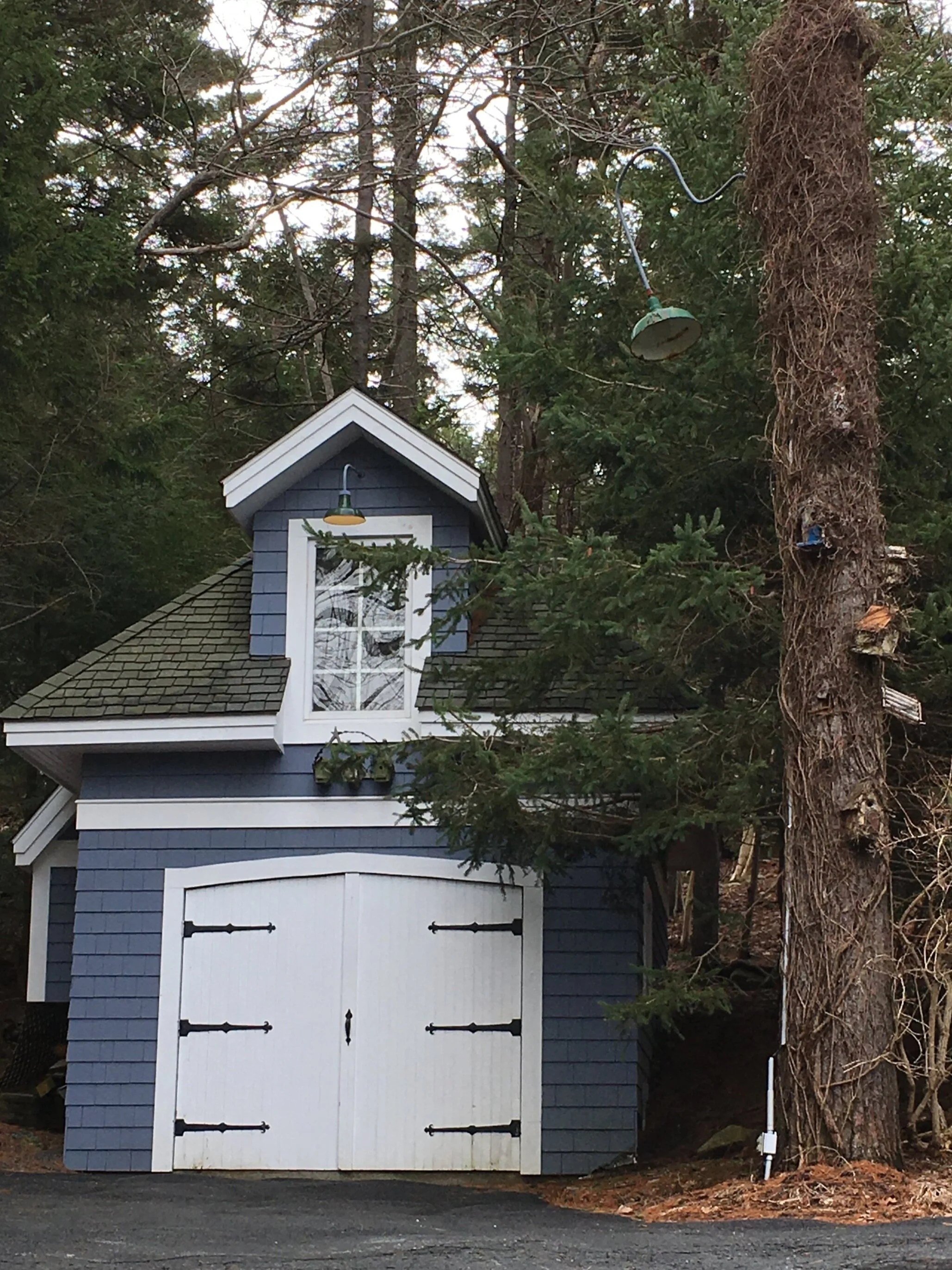waterfront cottage garden
This Andrew Cobb inspired home was built some 30 years ago. The new owner had the original drawings for the garden…a rare opportunity to see the original vision. After a review of the drawings and a walk about the garden, it was clear that much had changed.
The woodland environment had grown. Taller trees created a more shady garden than existed 30 years earlier. Some plantings were missing and some shrubs were misshapen due to poor pruning over time.
This evergreen was a high-visibility eyesore. Like many of the specimen trees and shrubs, it was poorly sited (too large a tree for a small space) and misshapen due to over pruning. On the right side of the stairs a weeping pea standard was leaning at an uncomfortable angle angle…the victim of piled winter snow.
The client wanted a more distinctive entrance…and was torn between symmetrical evergreens on both sides or complementary deciduous shrubs that were interesting but different in style.
Blooming, shade tolerant evergreens were considered…but ultimately a corkscrew hazel and different variety of weeping pea were selected and installed.
The right garden was overgrown, lacked balance and sadly, a number of the mature boxwoods had been crowded and poorly pruned resulting in bare spots that could not be remedied.
Numerous mature rhododendrons were retained; larger ones along the foundation were blocking light in the windows requiring a staged approach to removing height.
This forsythia was too large for its narrow location and over time it had been pruned to allow for passage along the path. Spent and misshapen, it was removed to allow for a planting more suited to the size and light conditions of this area of the garden.
The rhododendron in front of the window on the right was pruned by 12 inches to reduce its height and allow more light in the home. The boxwoods and other shrubs were assessed, edited and pruned.
Fresh plantings included spring and summer blooming creme fraiche deutzia and fairy roses, coneflower and creeping time along the path. In late summer and fall, pink and white Japanese anemone and standard hydrangeas will brighten this garden.
The plants are carefully spaced to allow for each one room to grow to mature size. While the deutzia will take longer to fill out, by the end of summer, the anemone had tripled in sized!
The forsythia was replaced with standard hydrangeas that bring large, bright blooms in late summer and fall and provide winter interest. Hydrangeas are an excellent blooming shrub choice for this shade area of the garden.
Along the left side, these fairy roses are still blooming in October.
The ancient lilac standards no longer bloomed and blocked the front windows, making them candidates for removal. Along the foundation, dark barberry plants were non-descript against the soft purple paint color of the home.
The foreground of the stone wall was planted with massive ferns that made passage along the path impossible and the client asked that they be removed. We did so with some regret; in the right place the ferns would have been stunning and we were unable to remove most of them intact due to the invasive nature of their root systems. Those that were salvageable were replanted in a background border area where they can flourish.
A climbing hydrangea was installed along the rock wall and over time will become a key focal plant in this garden. Along the foundation of the house, large leaf chartreuse barberry plants provide an exciting contrast to the house color.
Repeated elements from the right garden beds bring continuity to the design; spring blooming heath, creeping thyme for the path, coneflower, hot pink blooming rhododendron and compact purple geranium.
A small garden nook is sparsely planted leaving unsightly utility structures exposed. A clematis along the wall struggles without a structure on which to climb.
The clematis is happily growing on a new trellis. Fragrant mock orange brightens this garden nook, purple salvia and flag iris contrast with the large leaf golden barberry for a visually stimulating garden.
This small garden bed is overplanted and none of the plants were in great condition. Our mantra “right plant, right place” is validated by the appearance of this mature boxwood; poorly sited and pruned, it has large bare areas and is leaning away from neighboring plants.
We remove a number of the plants that were in poor condition beyond repair by pruning. We retained a very large rhododendron in the back; while the foliage was sparse, it was happy in the shade, the perfect plant to fill a corner, and with pruning and care we believe it will become full and lush over time.
Pristine wedding gown hydrangea brightens this shady garden bed. Textured evergreen hinoki, pink and white Japanese anemone and delicate maidenhair fern are among the plants that have transformed this garden bed.
This shady area of the garden has some lovely mature rhododendrons at the bottom of the stairs and a backdrop of mature evergreens for privacy along the border of the property. The foreground was largely bare with one lonely hosta starting to emerge from the cool, early spring ground.
Glossy bergenia and evergreen Mountain Fire pieris japonica will put on a spring show of color under the canopy of the rhododendron. Delicate maidenhair fern moves beautifully in the wind and a cluster of five white margin hosta will brighten the area through the season.
The garden planting is spaced to allow the pieris to fill out as it matures.
A favorite highlight of this garden is the use of Japanese anemone. We installed two varieties; white Honorine Jobert and pink September Charm.
These perennials have properties that we love: 2-3 inch blooms are hard to find in a shade-tolerant zone 5-6 perennial. They also mature at a remarkable 3-4 feet - the size of a shrub! Finally, their compact green bases are topped with tall wiry stems with beautiful blooms that move gracefully in even the softest breeze.
Remarkably resilient, easy to care for and blooms that stand out for their simple, clean beauty.
Another favorite garden plant, this rose variety begins blooming in June and doesn’t stop till fall. We have seen blooms covered with snow in November!
A mature size of 3’ by 4’, this lovely shrub has masses of small, multi-petal blooms and glossy green foliage. It’s versatility makes it beautiful in cottage gardens or as mass foreground planting to tall ornamental grasses for a modern juxtaposition.
The garden renovation included new plantings with flowering evergreen and deciduous shrubs and standards, blooming perennials, creeping thyme for the path and a new trellis for an existing clematis. A pink, purple and white color palette was chosen to complement existing plants. Eye-catching, chartreuse-toned barberry along the left foundation contrasts brilliantly against the lilac hue of the cladding.
Amy monitors the inventory heading to the garden while Joselyn and Jules load two trailers with healthy nursery plants.
A nod to the garden shed and vine covered tree to its right. Note the birdhouses on the tree and lovely architectural features of the shed. We love the dormer, wide black hinges…and well, just about everything about it. A lovely addition to a stunning cottage-style home and garden.
Location: Bedford
Client Goals: Garden Renovation
The home-owner grew up in an Andrew Cobb designed home built back when the Bedford Basin waterfront was cottage country for city dwellers.
After living abroad, she returned to Nova Scotia and was delighted to find a more recently constructed home built in Cobb’s style was available in her childhood neighbourhood.
The exterior aesthetic is classic-Cobb. The scale and location of the home on the Bedford waterfront creates an inviting and charming cottage ambiance.
One of the prettiest homes in Bedford, it comes with a she shed too. This was a property we love to return to every chance we get.



